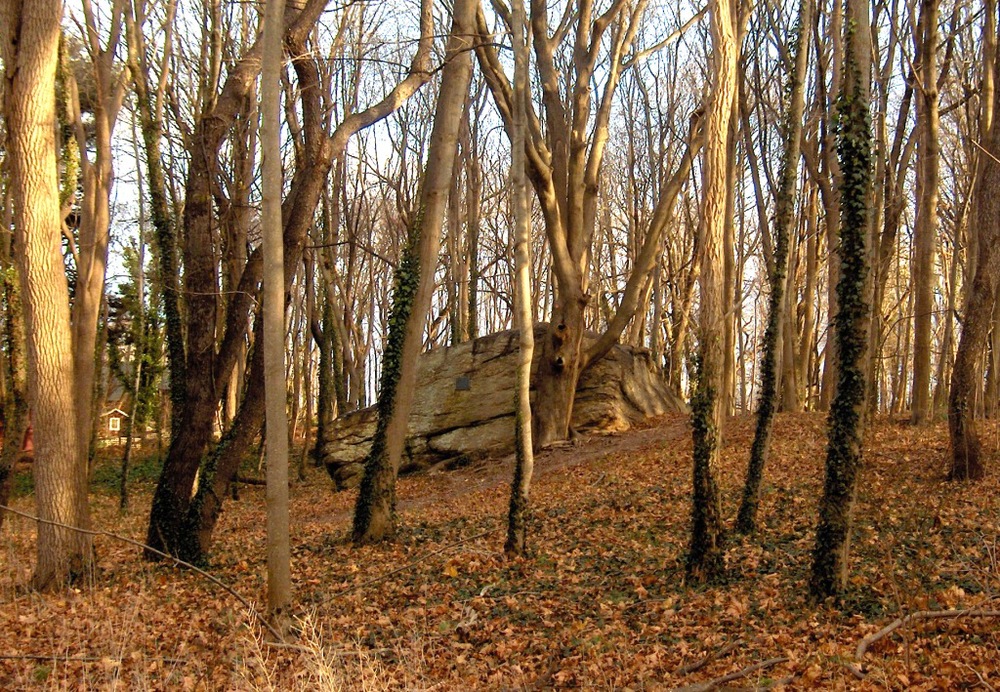
Patriots Rock
The Battle of Setauket was fought here between Colonial and British forces in 1777. Today, this historic landmark serves as an important reminder of the strength and endurance that is the foundation of our country’s past, present and future.
In geological terms, Patriots Rock is really an erratic – a large rock that is not normally found in the surrounding area. This rock was likely pushed here due to glacial movement during the last Ice Age. Similar erratics can be found throughout the Three Villages and the north shore of Long Island, though few are as large as Patriots Rock.
During the prehistoric period, and afterwards, the Algonquian Native Americans on Long Island, including the local Setalcotts, used these large boulders as location markers and meeting sites.
In the first decades of English settlement, this rock was part of the Setauket Village Green. At that time the Village Green extended all the way to the mill pond and creek. According to folklore, Reverend Nathaniel Brewster, the Town of Brookhaven’s first minister, delivered his first sermon from the top of the boulder.
At the start of the Revolutionary War, Long Island was controlled by British forces. The island’s agricultural resources, along with its proximity to British headquarters in New York City, made it an important ‘prize’. A string of fortifications was established by the British along the north shore to maintain control of the colonists and repel attacks from Patriot forces positioned across the Long Island Sound. The Presbyterian Church, visible in the distance, was commandeered by the British to serve as one of these forts. With a garrison of about fifty Loyalist soldiers, led by Lt. Colonel Richard Hewlett, the area was firmly in the hands of the enemy.
In the early morning hours of August 22, 1777, Patriot forces, led by General Samuel Holden Parsons, crossed from Fairfield, Connecticut to nearby Cranes Neck to launch a bold attack on the Loyalist fortification in Setauket. Fighting alongside the raiding party were Setauket residents Caleb Brewster, Zachariah Greene and Jonathan Dickerson.
The Patriot forces established their position at the Rock to mount an attack on the fort. For the next four hours the air was filled with the thunder and smoke of both musket and cannon fire in fierce fighting. Finally, with neither side bowed and knowing British reinforcements would soon arrive, General Parsons ordered his forces to stop firing and to return to their whaleboats.
As the raiding party sailed back to Connecticut, each American Patriot knew, that although they did not dislodge the British on this day, they let local residents know they were not abandoned. Importantly, the Patriots demonstrated the fighting strength that would someday bring both freedom and democracy to a new nation.
